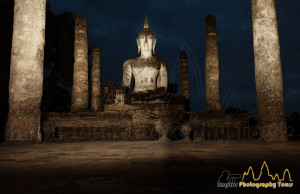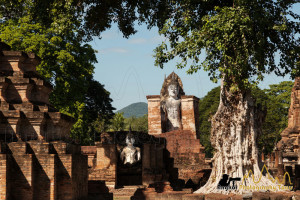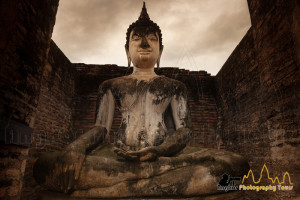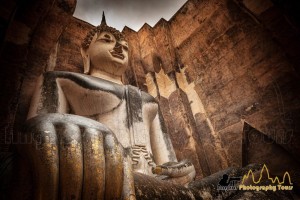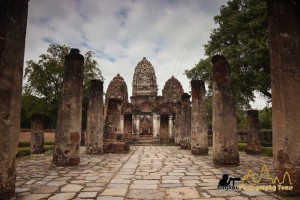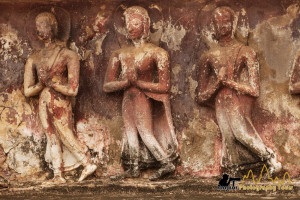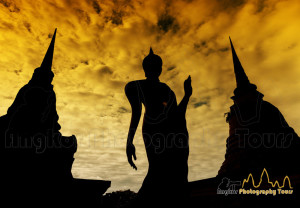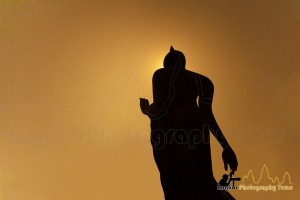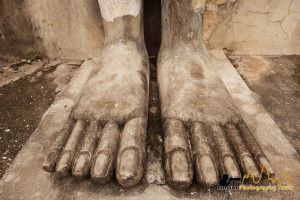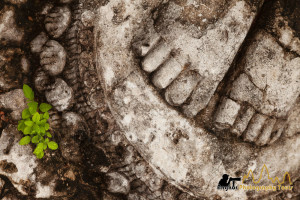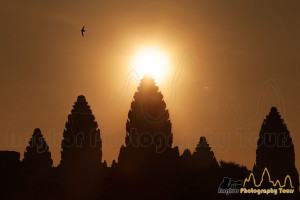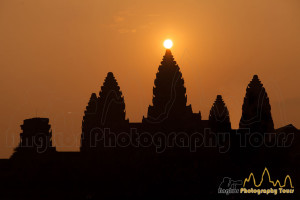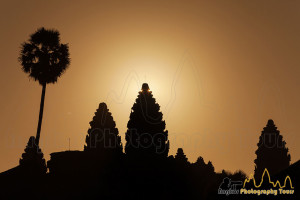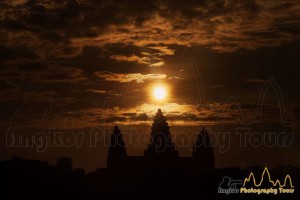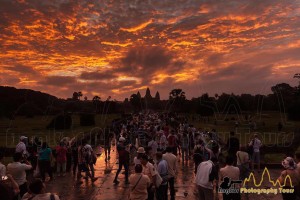I recently had the opportunity to revisit the temples of Sukhothai in Thailand I explored for the first time back in 2011. Leading photography tours in Angkor for more 2 years now and having walked hundreds of kilometers in the temples it gave me a new perspective about photography but also allowed me to appreciate better the architecture and influences, especially Khmer, present in Sukhothai.
The Sukhothai historical park, listed on the UNESCO World Heritage list since 1991, is located about 400 kilometers north of Bangkok and is home of the old temples of the Kingdom of Sukhothai (translated by dawn of happiness) which existed between the 13th (after being freed from the Khmer empire) and 14th century (after being annexed by Ayutthaya).
The park lies on 70 square kilometers and divided in two sections, the inner and the outer wall. The inner city is immaculately clean with cut grass, ponds and frangipani trees and certainly a model of management. While it is possible to visit the temples inside the inner enclosure of 2.5 sq km2 by walk (Angkor Wat temple is 1.95 sq km2) it is advisable to rent a bicycle.
The architecture in Sukhothai got many influences over the years from Ceylonese (modern Sri Lanka) and Khmer art. In the part, are ruins of two temples built during the Khmer empire. The largest one, just outside them main enclosure, called Wat Phra Pai Luang is the oldest of the group built during the reign of King Jayavarman VII, but only one tower with the Khmer architecture remains.
Wat Si Sawai is another example of Khmer architecture subsequently modified with the Thai style with three beautiful towers (called prang) one of them still housing a pedestal which once held a linga, dedicated to shiva.
The main temple in Sukhothai park is Wat Mahathat with an imposing seated Buddha facing east making this temple it a perfect location for sunrise and sunset. As a bonus there is like in Angkor Wat a small reflecting pond.
Within the walled old city, on temple temple not to be missed is Wat Sa Si with a Sukhothai style walking Buddha and a main tall Chedi
Wat Si Chum outside the park has an impressive seating Buddha image quite enigmatic behind a tall square structure called Mandapa. In a crumbling state, the Buddha image and Mandapa were restored between 1953 and 1956.
If you already visited the temples of Angkor I would recommend extending your UNESCO world heritage journey by spending one or two days exploring the ruins of Sukhothai as this site has the advantage of being much less touristic than Angkor and great for photography.


